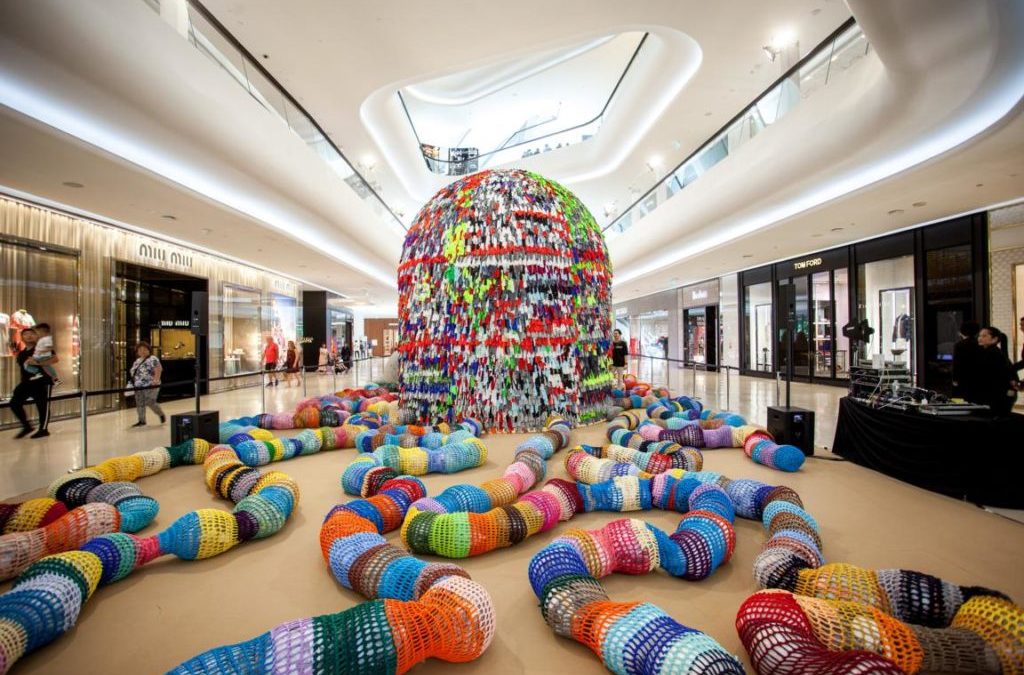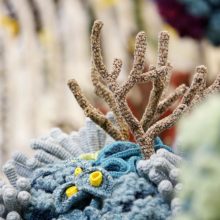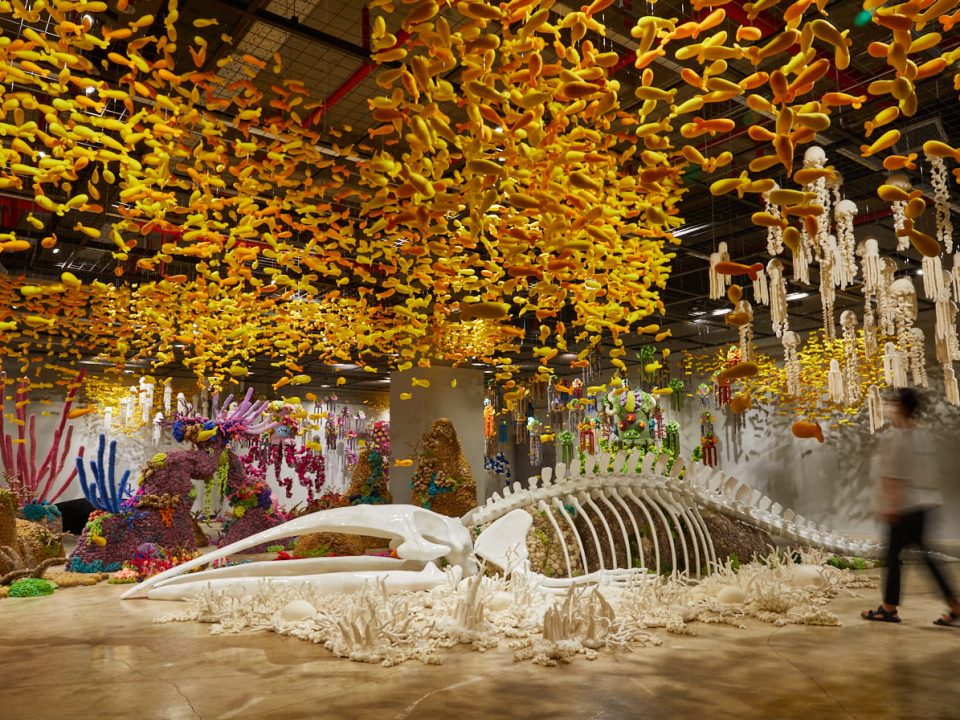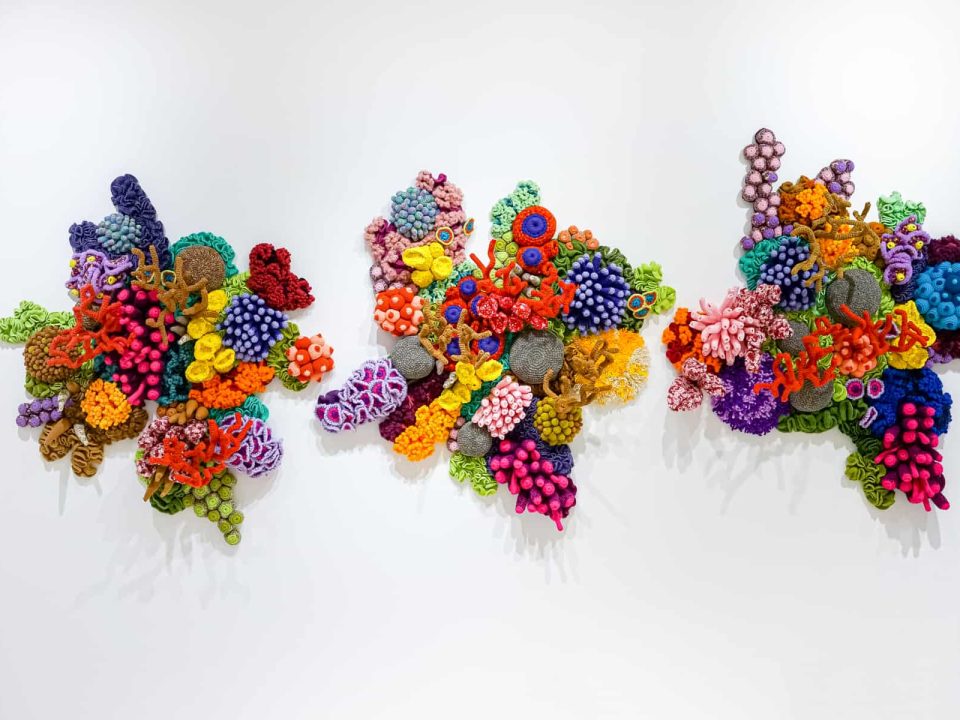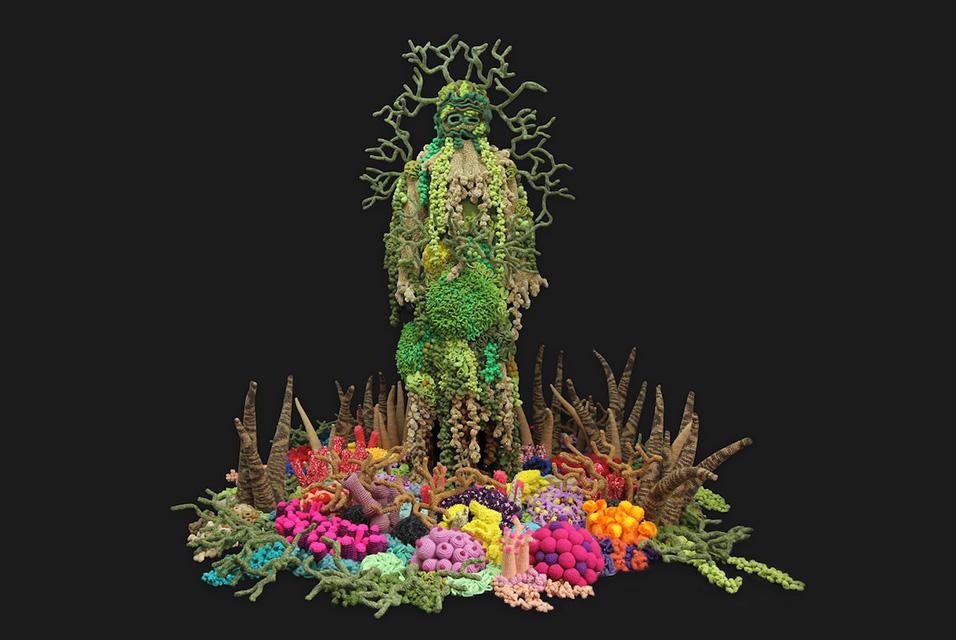
A fragile wonderland
February 19, 2020
Playful Ocean Life Sprawls Throughout Mulyana’s Immersive, Knit Installations
August 6, 2020Indonesian artist Mulyana was born and raised in Bandung, West Java and creates colourful, whimsical installations using crochet, stitch and knitting. Alongside his alter ego The Mogus his jewel-like coral worlds are a visual reminder that environmental concerns aren’t just limited to what happens on land.
What is your background in textiles?
I studied Art Education at UPI, Bandung, West Java and learnt to crochet in Tobucil, a small indie bookshop which has many creative workshops. Since then I have developed my crochet skills by exploring techniques, materials and ideas.
Where are you based?
I moved from Bandung in West Java to Yogyakarta in Central Java in 2014 where I work from my home studio.
What is it that appeals to you about textiles?
Textile is the closest element to daily life. Something close and attached to our body through which we express our personality and feelings. We even show our specific culture with our clothing. Textiles have special characteristics and a large spectrum of colours. It is very light in weight and easy to transport.
How do you describe your work and what technique do you use?
My work is mainly crocheted installation. I also use knitting, yubiyami [finger knitting] and sewing.
What type of wool do you use and why?
I use acrylic and polyester for its durability and affordability. I don’t use a specific band, mostly a mix of factory surplus from Bandung.
How do you work?
I make miniature samples which I combine to create a larger modular piece. I then put these together to create an artwork. For projects such as commissioned works and window displays, I make sketches to present my ideas before combining the modules for the finished installation.
How long does a piece generally take you to create?
For one coral island approximate size 150 x 80 x 50 cms I need one month to make it. For a large installation like Sea Remembers, I needed 6 months and about 70 crocheted pieces.
What are you most proud of in your career so far?
What makes me proud is to be able to present the handmade crocheted pieces, which is known as mere hobby of the old ladies and only perceived simply as handicraft, as a piece of contemporary fine artwork.
Do you have any advice for aspiring artists that use textiles as a medium?
If you like it, keep on exploring and innovate by thinking outside of the common practice.
Do you have any upcoming exhibitions?
I will have a duet show at SAPAR Gallery in New York opening late March, a solo exhibition in August in Jakarta, Indonesia and I’m working for a commission work for ESPLANADE, Singapore, previewing in Nov 2020. At my solo show in August, I will be launching a book, 10 Tahun Berkarya Bersama The Mogus (10 years working with The Mogus).
Jumping the Shadow, Mulyana and Iwan Effendi, March 27 – April 27th, at Sapar Contemporary Gallery, New York.
source : https://www.textilecurator.com/home-default/home-2-2/mulyana/

